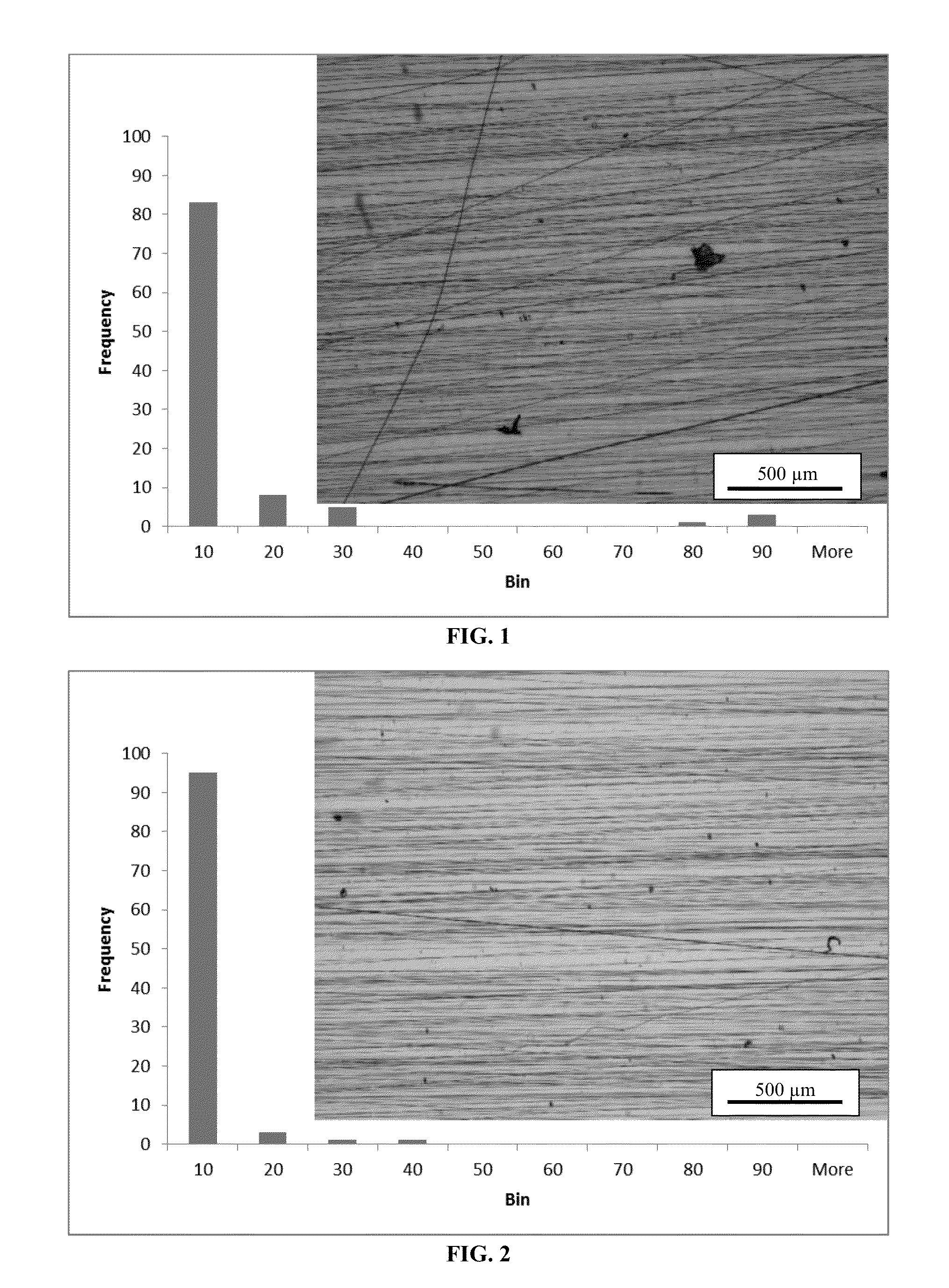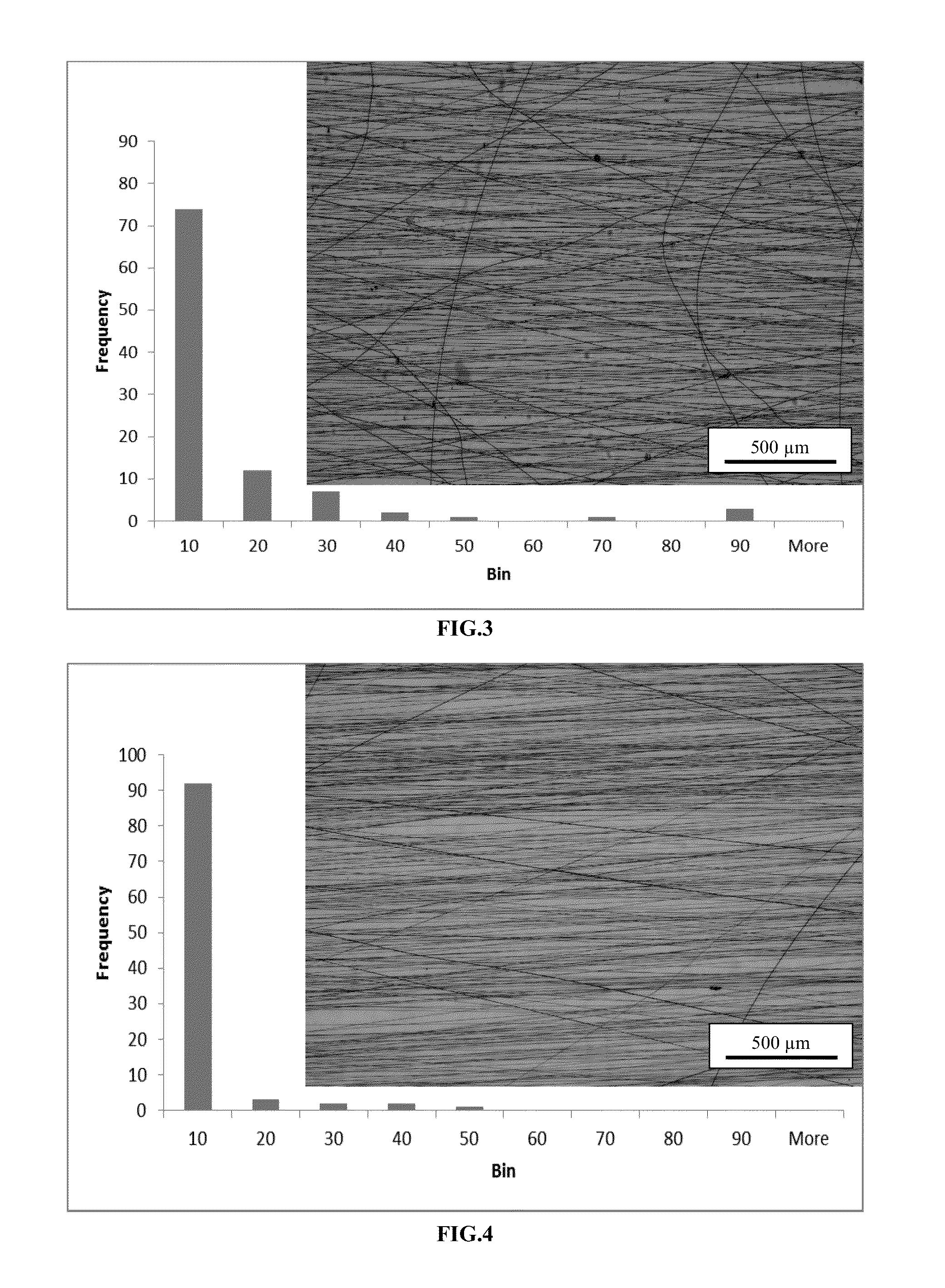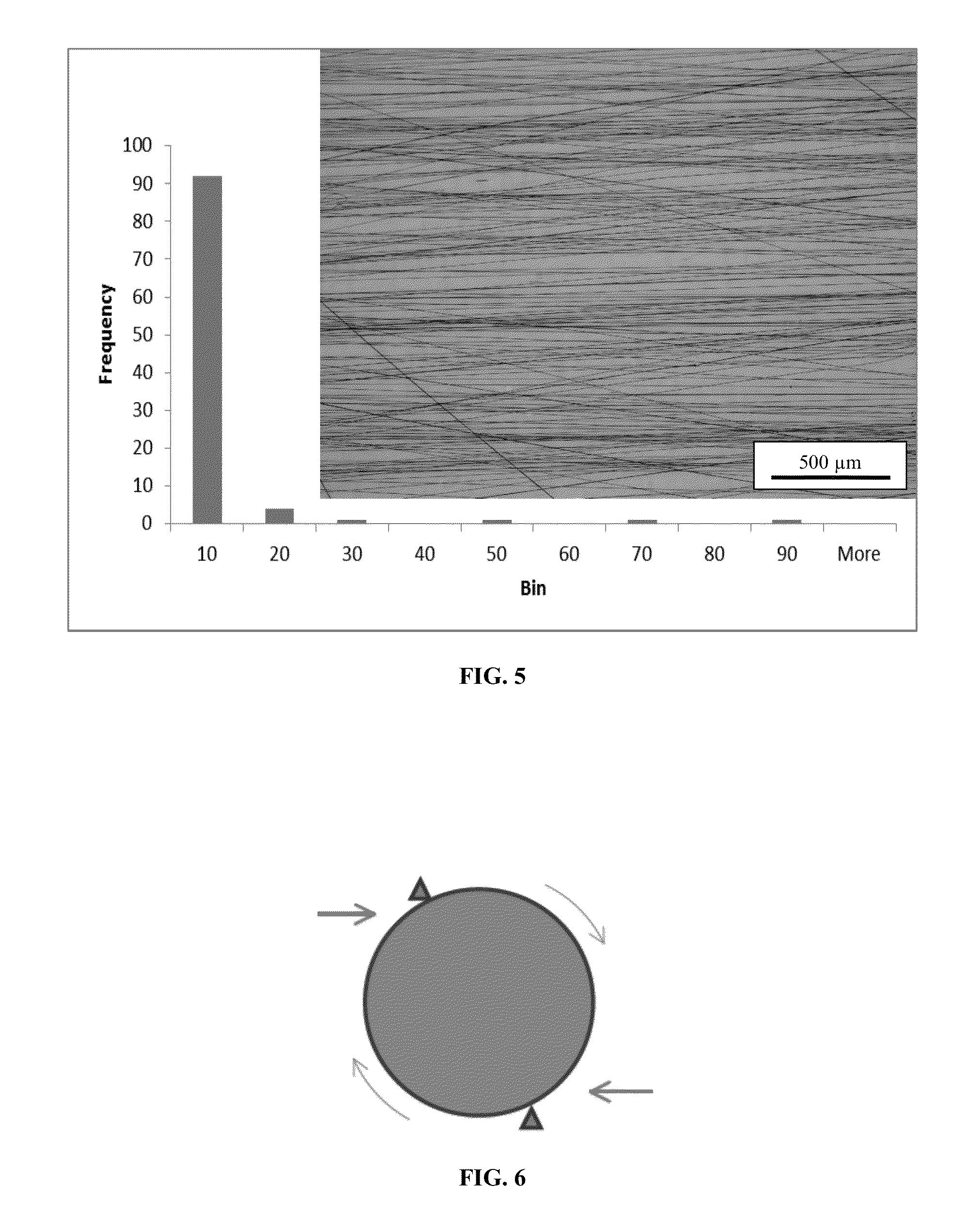Nanofiber scaffolds for biological structures
- Summary
- Abstract
- Description
- Claims
- Application Information
AI Technical Summary
Benefits of technology
Problems solved by technology
Method used
Image
Examples
example 1
[0038]In Example 1, patch material was formed by fiber spinning the precursor solution at a deposition rate of 1 ml / h at a tip to substrate distance of 20 cm, while rotating the surface at a rate of 478 RPM (15.7 m / s) for a period of 2 hours, using a + / −4.2 kV field. The resulting fibers had an alignment of about 91% (that is, 91% of the fibers had a fiber angle within 10° from the spinning direction of the wheel).
example 2
[0039]In Example 2, patch material was formed by fiber spinning the precursor solution at a deposition rate of 1 ml / h at a tip to substrate distance of 20 cm, while rotating the surface at a rate of 478 RPM (15.7 m / s) for a period of 2 hours, using a + / −5.0 kV field. The resulting fibers had an alignment of about 75%.
example 3
[0040]In Example 3, patch material was formed by fiber spinning the precursor solution at a deposition rate of 1 ml / h at a tip to substrate distance of 20 cm, while rotating the surface at a rate of 478 RPM (15.7 m / s) for a period of 2 hours, using a + / −4.8 kV field. The resulting fibers had an alignment of about 98%.
[0041]In this embodiment, to speed the growth of human tissue into the fiber preform, the fibers were aligned by rapidly spinning the preform so that alignment of the structure produced by standard electrospinning while the fibers were drawn into a substantially parallel ordering by the tension created by spinning the form. The properties of the fibers can be controlled to optimize the fiber diameter, the fiber spacing or porosity, the morphology of each fiber such as the porosity of the fibers or the aspect ratio, varying the shape from round to ribbon-like. The precursor solution may be controlled to optimize the modulus or other mechanical properties of each fiber, t...
PUM
| Property | Measurement | Unit |
|---|---|---|
| Fraction | aaaaa | aaaaa |
| Fraction | aaaaa | aaaaa |
| Fraction | aaaaa | aaaaa |
Abstract
Description
Claims
Application Information
 Login to View More
Login to View More - R&D
- Intellectual Property
- Life Sciences
- Materials
- Tech Scout
- Unparalleled Data Quality
- Higher Quality Content
- 60% Fewer Hallucinations
Browse by: Latest US Patents, China's latest patents, Technical Efficacy Thesaurus, Application Domain, Technology Topic, Popular Technical Reports.
© 2025 PatSnap. All rights reserved.Legal|Privacy policy|Modern Slavery Act Transparency Statement|Sitemap|About US| Contact US: help@patsnap.com



